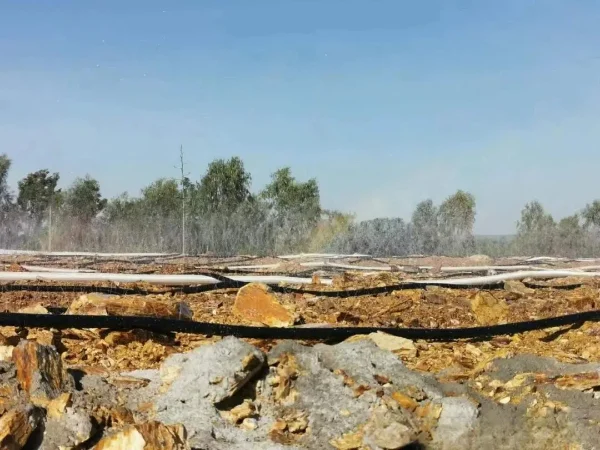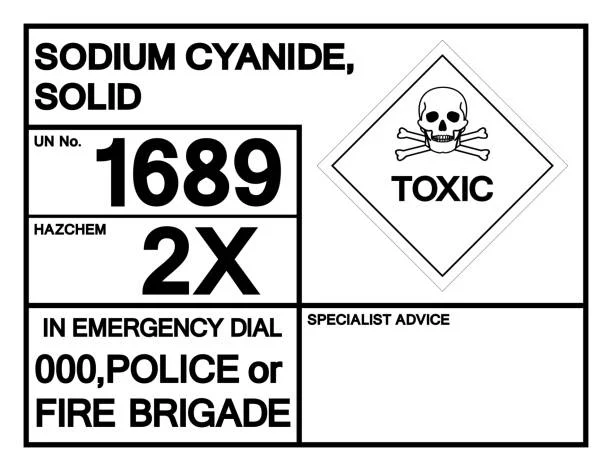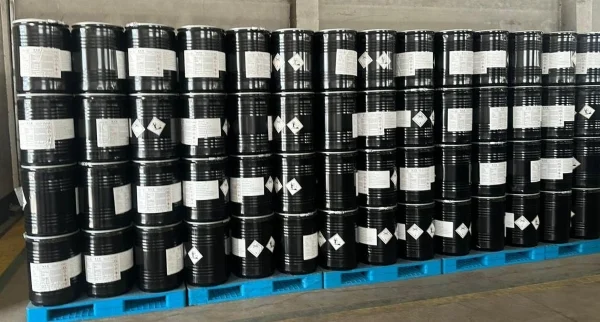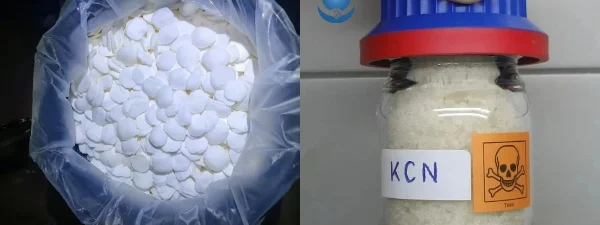
Sodium cyanide, with the chemical formula NaCN, is a compound that often elicits a sense of caution due to its high toxicity. However, it also plays significant roles in various industrial and chemical processes. This article delves into the wide - ranging uses of sodium cyanide, highlighting its importance in different fields while also emphasizing the need for strict safety measures.
1. Mining Industry - Extraction of Precious Metals
One of the most well - known applications of Sodium Cyanide is in the mining industry, particularly for the extraction of gold and silver. Gold, being a relatively unreactive metal, has a strong affinity for cyanide ions. In the presence of oxygen and water, sodium cyanide reacts with gold in the ore. This process, known as cyanidation, allows the gold to be dissolved in the cyanide solution, separating it from the other impurities in the ore. The resulting gold - cyanide complex can then be further processed to recover the pure gold. Silver can also be extracted in a similar manner. This method is widely used due to its efficiency and relatively low cost compared to other extraction techniques. However, it is crucial to handle sodium cyanide with extreme care in mining operations to prevent environmental contamination and harm to workers.
2. Chemical Synthesis - Building Block for Various Compounds
Sodium cyanide serves as a fundamental building block in chemical synthesis. It is used to produce a variety of important chemical compounds:
2.1. Production of Nitriles
Nitriles are a class of organic compounds with a specific functional group. Sodium cyanide can be used to synthesize nitriles through a reaction mechanism where the cyanide ion substitutes a halogen atom in an alkyl halide. Nitriles are important intermediates in the production of pharmaceuticals, agrochemicals, and polymers.
2.2. Synthesis of Cyanuric Chloride
Cyanuric chloride is synthesized using sodium cyanide. It is an important compound in the production of dyes, pesticides, and water treatment chemicals. The synthesis involves a series of reactions starting from sodium cyanide, and its unique structure makes it useful in various chemical reactions.
2.3. Preparation of Other Cyanide - Based Compounds
Sodium cyanide is also used to produce other cyanide - based compounds such as potassium cyanide, sodium cyanate, and various metal cyanides. These compounds find applications in electroplating, metal finishing, and as catalysts in certain chemical reactions.
3. Electroplating Industry
In the electroplating industry, sodium cyanide is used in the formulation of electroplating baths. Cyanide - based electroplating baths are especially useful for plating metals like copper, silver, and gold. The cyanide ions in the bath help in binding with the metal ions, which offers several advantages. It allows for a more uniform deposition of the metal on the substrate, resulting in a smoother and more adherent metal coating. Additionally, it reduces the polarization at the anode, ensuring that the metal anode dissolves evenly during the electroplating process and maintaining a constant concentration of metal ions in the bath. However, due to the toxicity of cyanide, efforts are being made to develop alternative non - cyanide electroplating processes. But currently, cyanide - based electroplating is still widely used in some applications where high - quality plating is required.
4. Organic Synthesis in Pharmaceuticals and Agrochemicals
4.1. Pharmaceuticals
Sodium cyanide is involved in the synthesis of many pharmaceutical compounds. For example, it is used in the synthesis of some amino acids, which are the building blocks of proteins. In the synthesis of certain drugs, the cyanide group can be introduced into the molecular structure using sodium cyanide as a starting material. This cyanide group can then be further modified through various chemical reactions to obtain the desired pharmacological properties of the drug.
4.2. Agrochemicals
In the agrochemical industry, sodium cyanide is used in the production of pesticides and herbicides. Some pesticides are synthesized using cyanide - containing intermediates. These agrochemicals help in protecting crops from pests and weeds, thereby increasing agricultural productivity. However, the use of sodium cyanide in agrochemical production also requires strict safety and environmental regulations to prevent any negative impacts on the ecosystem.
5. Other Applications
5.1. Metal Cleaning and Surface Treatment
Sodium cyanide can be used in metal cleaning and surface treatment processes. It can help in removing rust, scale, and other impurities from metal surfaces. In some cases, it is used in combination with other chemicals in metal - finishing operations to prepare the metal surface for further processing such as painting or coating.
5.2. Rodenticide (Illegal and Restricted Use)
Historically, sodium cyanide has been used as a rodenticide due to its high toxicity. However, due to the extreme danger it poses to non - target organisms, including humans, its use as a rodenticide is highly restricted or banned in many regions. The accidental ingestion or exposure to sodium cyanide - based rodenticides can have severe consequences, making it an unacceptable option for pest control in most situations.
Safety Considerations
Despite its numerous applications, sodium cyanide is an extremely toxic substance. It can be lethal if inhaled, ingested, or absorbed through the skin. When sodium cyanide comes into contact with acids, it releases highly toxic hydrogen cyanide gas, which is extremely dangerous. In industrial settings, strict safety protocols are in place to handle sodium cyanide. Workers must wear appropriate personal protective equipment, including gloves, masks, and protective clothing. Storage facilities for sodium cyanide are designed to prevent any leakage or exposure to moisture and acids. In case of spills or accidents, proper decontamination procedures using substances like hydrogen peroxide, which can oxidize sodium cyanide to less toxic products, are immediately implemented.
In conclusion, sodium cyanide, despite its inherent toxicity, plays a vital role in several industries. Its applications range from precious metal extraction in mining to being a key reagent in chemical synthesis for pharmaceuticals and agrochemicals. However, the safe handling and use of sodium cyanide are of utmost importance to protect both human health and the environment.
- Random Content
- Hot content
- Hot review content
- Toxicity Assessment of Sodium Cyanide and Relevant Hazard Prevention Measures
- Flexible Customer and Supplier Relations Specialist (Location: Nigeria)
- Sodium Metal, ≥99.7%
- Acetone
- Barium carbonate 99% powder
- 97% 2-Hydroxypropyl methacrylate
- Diethylene Glycol
- 1Discounted Sodium Cyanide (CAS: 143-33-9) for Mining - High Quality & Competitive Pricing
- 2Sodium Cyanide 98% CAS 143-33-9 gold dressing agent Essential for Mining and Chemical Industries
- 3Sodium Cyanide 98%+ CAS 143-33-9
- 4Anhydrous Oxalic acid 99.6% Industrial Grade
- 5Oxalic acid for mining 99.6%
- 6Soda Ash Dense / Light 99.2% Sodium Carbonate Washing Soda
- 7Reagent Grade/Industrial Grade Hydrochloric Acid min.31%
- 1Sodium Cyanide 98% CAS 143-33-9 gold dressing agent Essential for Mining and Chemical Industries
- 2High Quality 99% Purity of Cyanuric chloride ISO 9001:2005 REACH Verified Producer
- 3 High-Quality Sodium Cyanide for Leaching
- 4Powdery emulsion explosive
- 5Industry Grade Electron grade 98% Sulfuric Acid H2SO4 Sulphuric Acid Battery Acid Industrial Sulfuric Acid
- 6Colloidal emulsion explosive
- 7sodium hydrosulfide 70% flakes used Mining Industry












Online message consultation
Add comment: